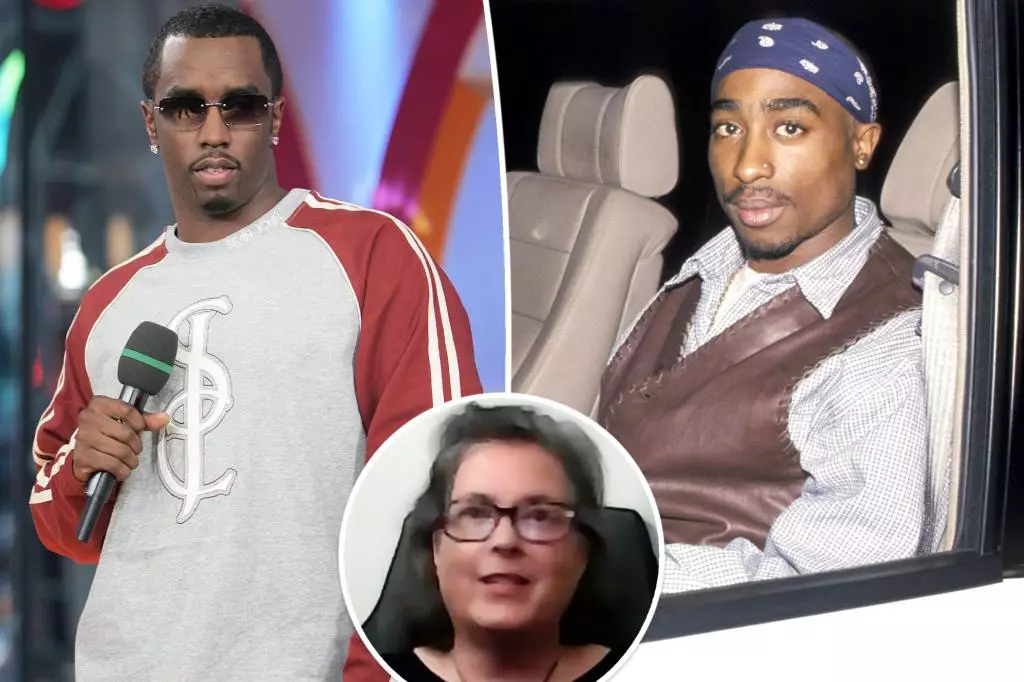Tupac Shakur, one of hip-hop’s most influential figures, continues to provoke intrigue and speculation even decades after his tragic death. Crime scene investigator Sheryl McCollum has recently reignited discussions about the rapper’s untimely demise, suggesting that Sean “Diddy” Combs may have a significant connection to both the 1994 shooting of Tupac and his subsequent murder in 1996. In a revealing interview with NewsNation, McCollum stated that the seeds of this animosity trace back to the very first incident in New York City where Tupac was shot. This perspective offers a fresh lens on a case that has lingered in the shadows of conspiracy theories and unsolved mysteries.
McCollum paints a troubling picture of the circumstances surrounding the Quad Studio shooting in 1994. At the moment of Tupac’s critical injury, Diddy was reportedly present with a large entourage, yet it was Tupac who bore the brunt of the assault. McCollum raises a significant question: Why was Tupac, alone, targeted so viciously, while Diddy and his group emerged unscathed? This imbalance of power during a chaotic moment hints at more than mere coincidence; it suggests knowledge of the attack, further complicating the narrative surrounding both figures.
In the aftermath of his shooting, Tupac openly criticized Biggie Smalls, Diddy, and Bad Boy Records, alleging complicity in the attack due to their indifferent reactions to his injury. His poignant reflections, shared with Vibe magazine in 1995, revealed a deep-seated distrust that festered between the two prominent figures in the hip-hop community. Tupac remembered feeling abandoned, noting that even Diddy—whom he claimed to have supported before his rise—failed to acknowledge him in such a dire situation. This betrayal, compounded by the already turbulent rivalry between the East Coast and West Coast rap scenes, added layers to an already fraught relationship.
Two years later, Tupac met a brutal fate, gunned down in a drive-by shooting that continues to haunt the world of music and law enforcement. McCollum points out a chilling pattern: both attacks left Tupac physically cornered—first in an elevator, then in a car—where escape was virtually impossible. The absence of video evidence from both incidents raises alarms within McCollum’s investigative mind; she posits that only a select group of individuals could accurately pinpoint Tupac’s location during both attacks.
While both Diddy and Biggie have maintained their innocence regarding Tupac’s death, the complexities of their relationships invite ongoing scrutiny. The fact that Biggie was killed just a year after Tupac in a still-unsolved case amplifies the speculation surrounding the two rappers and their associates. It is evident that the animosity between the East and West Coast factions was not just a backdrop but a driving force in the events leading to their deaths.
Recent developments have added another layer of intrigue. Reports suggest that Tupac’s family is contemplating a wrongful death lawsuit against Diddy, bolstered by claims from sources indicating that individuals from Diddy’s past are now coming forward with information. The complexity of this legal maneuver reflects a growing urgency among Tupac’s loved ones to seek justice, even as they navigate the unsettling implications of the claims made against one of hip-hop’s biggest moguls.
As Diddy faces unrelated charges in a separate legal matter, the connection between these incidents looms larger than ever. With Duane “Keefe D” Davis, the man currently charged with Tupac’s murder, alleging in a past interview that Diddy had placed a bounty on Tupac’s life, the tension has reignited debates that many believed were settled.
The narrative surrounding Tupac’s life and death continues to evolve, entwined with themes of betrayal, loyalty, and violence in the world of hip-hop. As Sheryl McCollum’s theories push this dialogue forward, they challenge us to confront uncomfortable truths about power dynamics, friendship, and the fierce protection of legacy in an industry that remains haunted by loss. With each passing year, the conversations around Tupac Shakur remind us that some mysteries are far from resolved, inviting fresh perspectives on an epic saga intertwined with the fabric of American music history.


Leave a Reply